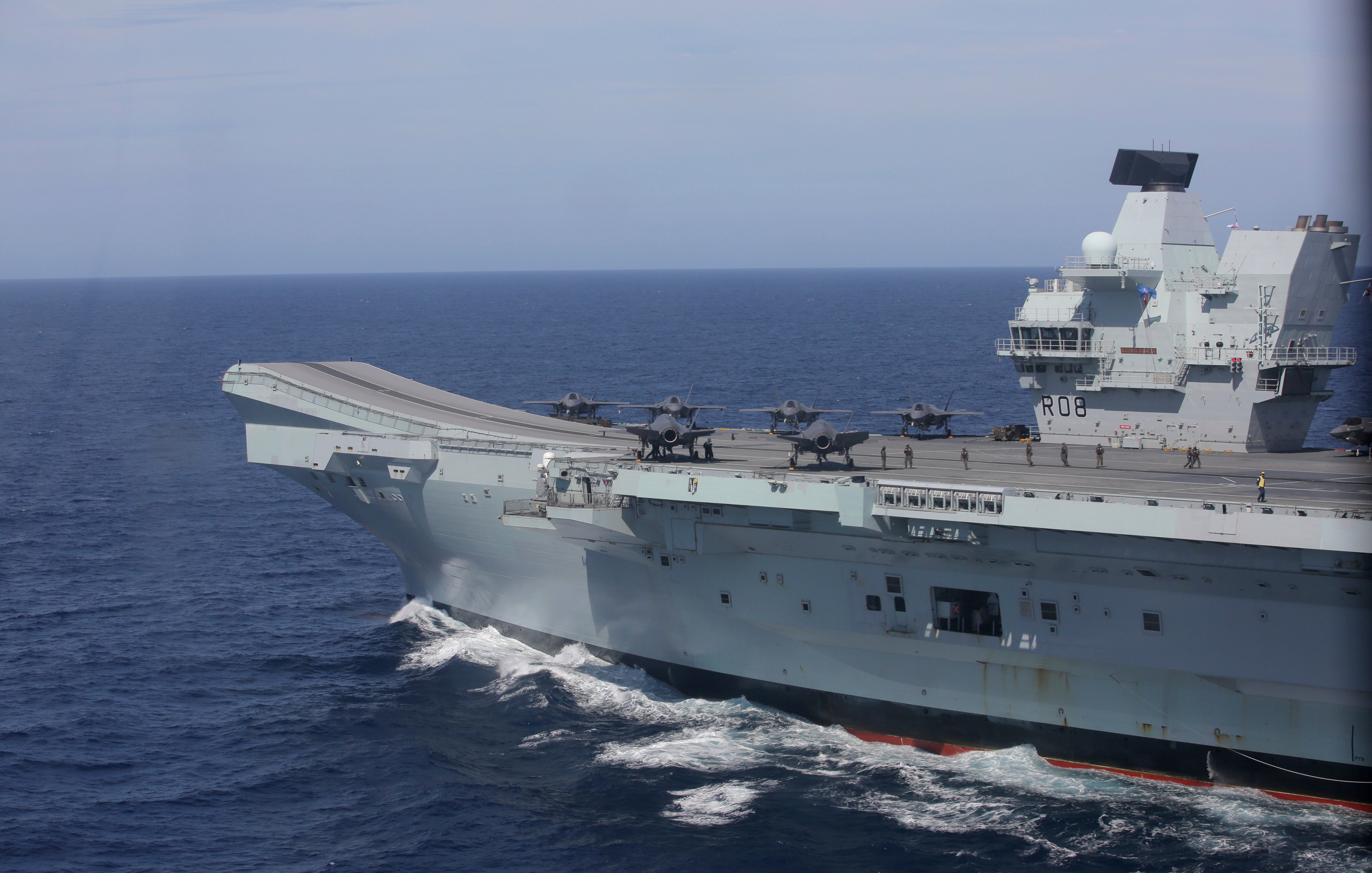Royal Navy and US salvage team work to recover F-35 that crashed in Mediterranean
The fighter jets cost about £100m each

A joint British and American operation is underway to find an F-35B warplane with highly advanced secret technology in waters two kilometres deep in the Mediterranean after it crashed while taking off from an aircraft carrier.
The entry point of the fast-jet into the ocean was not far from the vessel, HMS Queen Elizabeth. However, the aircraft’s wings would have made it glide underwater for a distance before sinking to the bottom, say defence officials, making locating it a complex process.
The immediate focus would be to recover the most sensitive equipment from the aircraft, which cost about £100m each.
The weapons and computer systems onboard would be of great value to adversaries, and the sea lanes where the crash happened are frequently used by Russian submarines and surface vessels.
Any attempts by a non-allied state to get to the wreckage will be tracked and “appropriate action taken”, say military sources, while stressing that a stand-off would be an unlikely scenario.
The pilot, who ejected from the jet and was picked up by a helicopter, has not suffered serious injuries. An investigation has started into the accident. The Ministry of Defence say there are no immediate plans to suspend the F-35B fleet from flying.
An American unit based in Spain specialising in undersea salvage will be part of the recovery mission alongside UK counterparts. There are 10 American F-35Bs onboard the Queen Elizabeth in addition to eight British planes.
One reason for the US involvement in the recovery process is that the technology onboard the F-35B is American.
The US Navy’s department of Supervisor of Salvage and Diving is expected to lead the American effort, and CURV-21, the 3-tonne Cable-controlled Undersea Recovery Vehicle, is expected to be used in the operation.
The CURV-21 was successfully used to lift a MH-60s Seahawk helicopter from the bottom of the sea off the coast of Okinawa, Japan, two years ago. An earlier version, CURV-1, was used to raise a Mark 28 hydrogen bomb after a B-52 bomber collided with an air tanker over the Mediterranean in 1966.
The F-35Bs from the Queen Elizabeth took part in anti-Isis operations earlier in the summer, before the aircraft carrier led a strike group to the Indo-Pacific in waters disputed between China and international powers, including a number of neighbouring states.
There are currently 24 of the fast jets with the UK military, the first batch of 138 bought from the US aviation manufacturer Lockheed Martin for £9bn.
The accident in the Mediterranean was the first involving a British F-35, but there have been a number of others in the past. In June 2014, a USAF F-35A had a catastrophic engine fire caused by a fractured rotor as it took off in Florida.
Two years later a US Marine Corps F-35B suffered a fire in its weapons bay mid-flight. In September 2018 a US Marine pilot had to eject over South Carolina during a training flight on another F35-B. The problem, on that occasion, was a fault in the carbine system.
The cost of the aircraft, one of the most expensive weapons platforms in the world, continued to rise during the manufacturing process until it was capped by Lockheed Martin following strong criticism from then President Donald Trump.
A long list of problems emerged, with the Pentagon acknowledging that 275 faults have been found in the attack system. The US Marine Corps suspended operations on its version of the aircraft, the same as the ones used by the UK, for a period, after computer malfunctions.
Subscribe to Independent Premium to bookmark this article
Want to bookmark your favourite articles and stories to read or reference later? Start your Independent Premium subscription today.

Join our commenting forum
Join thought-provoking conversations, follow other Independent readers and see their replies